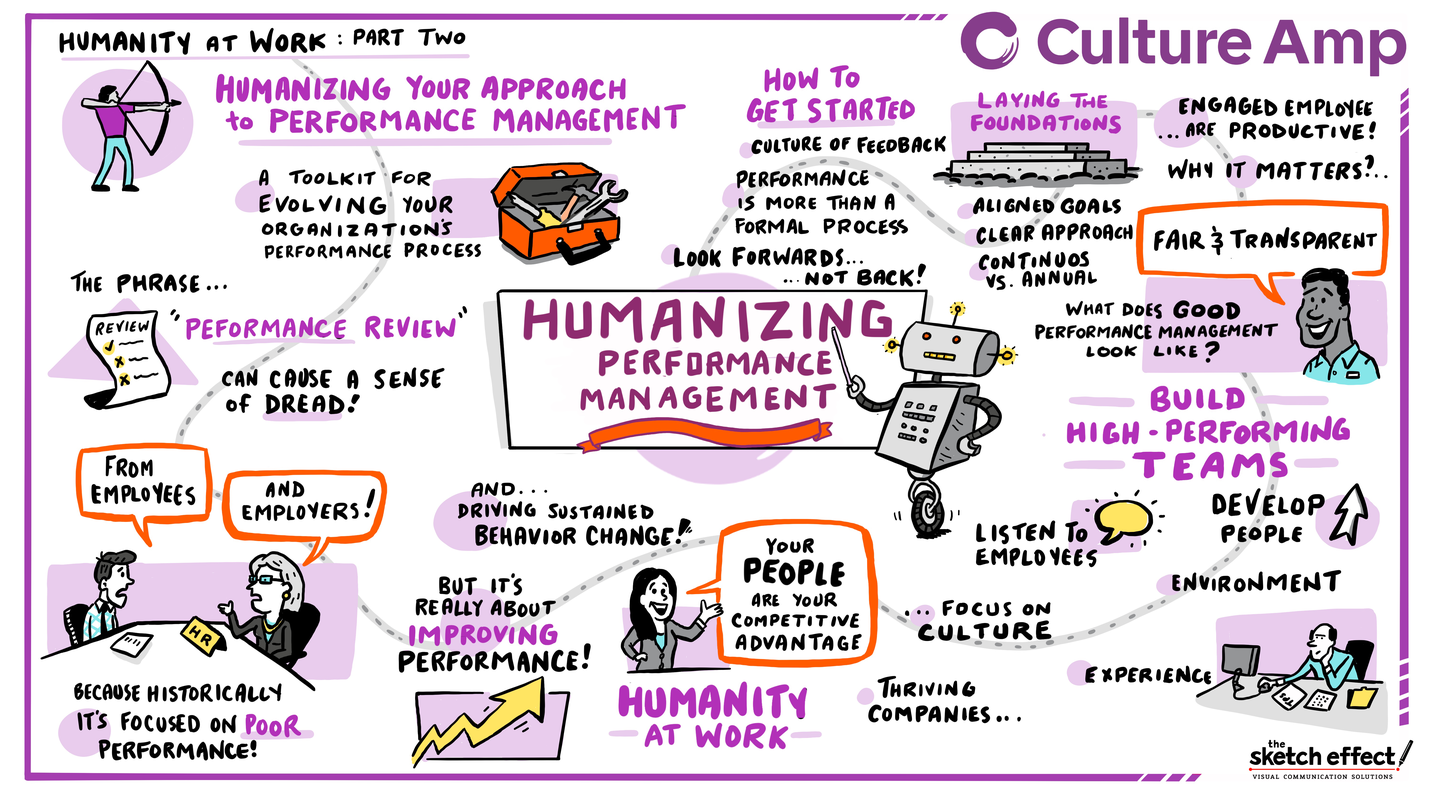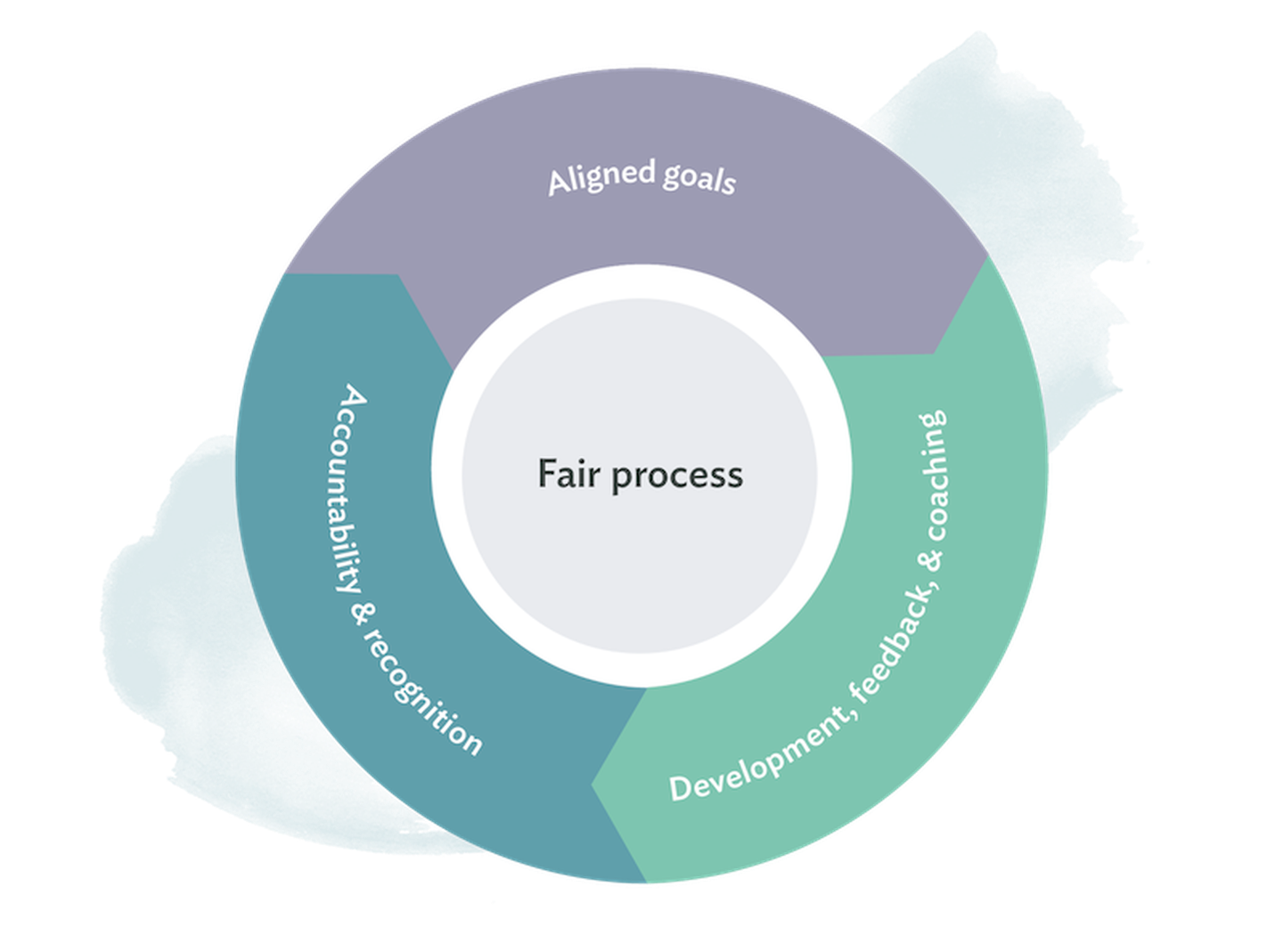The 4 qualities of effective performance management

According to recent studies by the management consulting firm, Deloitte, company performance management systems have a negative sixty net promoter score (-60 NPS). That means that according to benchmarks performance management systems are, on average, more despised than cable companies, internet service providers, and health insurance plans.
Given this statistic, it’s easy to see why so many organizations are evaluating and rethinking their approach. The good news is that there are several easy and actionable ways to make things better - and the results are impressive.
Research shows that organizations with employees who are more satisfied with their company’s approach to performance management are
- 1.4 times more likely to meet their financial targets
- Three times more likely to effectively manage change
- 3.2 times more likely to encourage risk-taking
- More than twice as likely to innovate
Luckily, there are a few things you can implement to create an effective and humanizing performance management system your people will love. But first, let’s explore a couple of the key challenges that you might face.
Challenges to performance management
Recent surveys have found that less than half of employees feel like the way they are evaluated is fair or transparent. Culture Amp’s review of relevant research has also demonstrated that there are a number of unconscious biases that can lead to inaccurate reviews.
Luckily there are several straightforward steps that can be taken to ensure that cognitive heuristics like recency bias don’t hinder your manager’s ability to make accurate evaluations of their direct reports' performance.
Old-school approaches to performance management are usually not motivating. If anything, they can be demotivating, uninspiring, and maybe even make people want to give up. According to a review of employee polls, only 2 in 10 employees strongly agree that their performance is managed in a way that motivates them to do outstanding work. Keeping this in mind will be important to the success of your company because employee motivation is an important element of employee engagement – and employee engagement is a leading indicator of company performance.
Yet, performance management can be so much more. By focusing on improving performance and driving sustained change, you can craft a more motivating, fair, and humanizing performance process. The ongoing pandemic has shown us that the work-life divide isn't sustainable – it's almost impossible for us to ask our employees to leave their humanity at home. By recognizing people's humanity at work, you can build a process that works for your people and for your bottom line.

Now let’s talk about the key elements that go into making your performance management system more motivating, fair, and humanizing.
4 qualities of effective performance management
We consulted academic literature, industry research, and best practices in Organizational Psychology to determine the most important factors. Ultimately, we identified four factors that are found in successful approaches to performance:
- Fairness, transparency, and accuracy
- Goal alignment and tracking
- Developmental coaching and feedback
- Accountability and recognition

Performance reviews that work for you
Download the eBook1.) Fairness, transparency, and accuracy
It’s a common misconception that employees’ opinions about performance reviews are strictly based on whether or not they get the raise or promotion (i.e., the outcomes) they wanted. On the contrary, researchers have consistently found that the two most important factors are the process itself and how employees are treated.
Research on Organizational Justice gives us a better understanding of what drives employees’ perceptions of fairness and value and how these influence employee attitudes and behaviors at work. Originally introduced by Dr. Jerald Greenberg in the 1980s, Organizational Justice works beautifully as a scientific model for "high stakes" processes like performance management and consists of 3 key factors:
Process
- Were decision-making rules clear and consistent?
- Were potential biases acknowledged and minimized?
- Did I have an opportunity to voice my input?
Interactions
- Was I treated with respect and compassion?
- Was I informed on how the process works?
Outcomes
- Did I get what I want?
- Was it appropriate and equitable?
We’re not suggesting outcomes aren't important, but rather that bonuses, raises, and promotions aren’t necessarily the path to an effective performance system your people will appreciate and embrace.
2.) Goal alignment and tracking
Understanding how your organization’s goals line up with individuals' day-to-day work and the teams they are members of is a key component of creating a motivating approach to performance. One of the most robust findings in Social and Organizational psychology is that people who set goals outperform those that do not.
Organizations like Google, The Gates Foundation, and Intel all credit simple goal-setting techniques for being foundational to their exceptional achievements. Driving company goals is often cited as a reason for having a performance management system to begin with.
We’re not suggesting that goals are the only element necessary to drive motivation or that motivation is the only thing necessary for high performance. However, aligning and tracking goals will go a long way to ensuring continued success for your organization. Plus, your employees will appreciate seeing the connection between their work and your larger strategy and purpose.
3.) Developmental coaching and feedback
Research has shown that high-performing organizations view "enabling employees to do their best work" as the true purpose and objective of performance management. When this is done well, organizations see a 23% increase in company-wide satisfaction with their performance management processes. It’s for this reason that many organizations are rebranding performance management as “performance development.”
In the past, the role of managers was to be a “boss” or a “command and control” style of leadership. This style clashes with today’s modern workforce and has been replaced by the manager-as-a-coach or manager-as-a-mentor model. In fact, research from the analytics firm Gartner found that employees who report to managers who are good coaches are 40% more engaged and demonstrate 38% more discretionary effort at work.
For that reason, developmental coaching and feedback should be a frequent, expected part of conversations. They should happen not just between managers and direct reports but also between peers and other leaders. In a 2018 study by the Institute for Corporate Productivity, researchers explored data from 234 organizations to understand better which performance management practices drive business impact. They found that creating a culture of feedback was the most critical driver of positive organizational and financial outcomes.
When people see others asking for and providing feedback, learning and growth become the norm rather than the exception.
4.) Accountability and recognition
Even though the trend has been for performance management approaches to be less focused on accountability and recognition, that doesn’t mean they're no longer important. In the high-stakes world of performance, accountability and recognition are just as important as ever.
In 2018, Culture Amp helped companies ask over 850,000 employees whether they agree with the following statement: “When it is clear that someone is not delivering in their role, we do something about it.”
Only 45% of employees agreed or strongly agreed with that statement. That means more than half of the employees surveyed on our platform feel uncertain - or worse - about how performance issues are handled within their organizations. Meanwhile, recognition is frequently cited as a key driver of motivation in a number of engagement surveys and is likely to be impacted by different approaches to performance.
After all, what is a performance management system doing if it’s not holding people accountable when they need help and recognizing great work when they’ve exceeded their expectations?
Effective performance management at the end of the day
Overall, creating an effective performance management system that people like is the key to creating a high-performing culture. It’s a move toward an ongoing, iterative cycle of:
- Aligning goals and expectations
- Providing developmental coaching and feedback along the way
- Giving people recognition when they knock it out of the park (or redirection when they need more help)
At the center of all this is a fair, transparent, and accurate process, as depicted below.

In the past, approaches to performance focused only on looking backward, but the future of performance emphasizes developing future success.
While old-school approaches favor command and control leadership, the next generation aligns goals but ensures people maintain their autonomy in the process.
In the past, managers got to determine people’s fate unilaterally. Now, leaders empower peer-to-peer feedback to help identify “brilliant jerks” that “kiss up” to their managers and kick everyone else around.
Rather than just having a once-a-year process, organizations are enabling continuous, semi-annual, or quarterly options.
In the future, the path to high performance isn’t kept a secret. Instead, it’s part of a system that is clear and fair to everyone.






